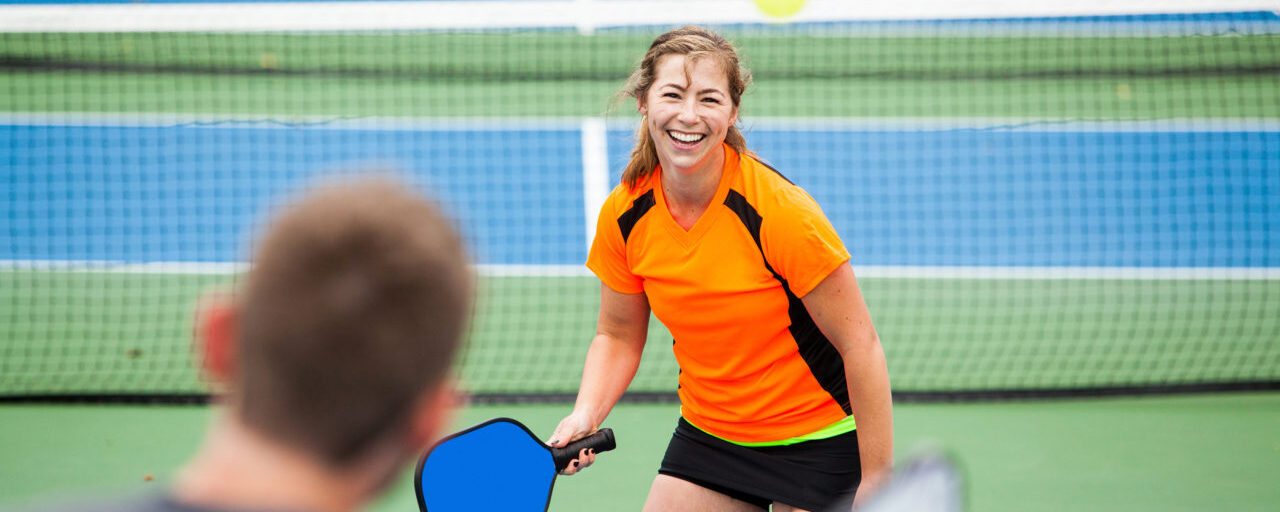| The IFP Rating System has been created to help describe differences in the various skill levels. |
| Rating |
Rating Description |
| 1.0 |
- New and have only minimal knowledge of the game and the rules.
|
| 1.5 |
- Limited to some rallies.
- Learning how to serve.
- Developing a forehand.
- Fails to return easy balls frequently and occasionally misses the ball entirely.
- Played a few games and is learning the court lines, scoring, and some basic rules of the game.
|
| 2.0 |
- Sustains a short rally with players of equal ability.
- Demonstrating the basic shot strokes – forehand, backhand, volley, overhead and the serve, but has obvious weaknesses in most strokes.
- Familiar with court positioning in doubles play.
|
| 2.5 |
- Makes longer lasting slow-paced rallies.
- Makes most easy volleys and uses some backhands, but needs more work on developing shot strokes.
- Beginning to approach the non-volley zone to hit volleys.
- Aware of the “soft game.”
- Knowledge of the rules has improved.
- Court coverage is weak but improving.
|
| 3.0 |
- More consistent on the serve and service return and when returning medium-paced balls.
- Demonstrates improved skills with all the basic shot strokes and shot placement but lacks control when trying for direction, depth, or power on their shots.
- Beginning to attempt lobs and dinks with little success and doesn’t fully understand when and why they should be used.
|
| 3.5 |
- Demonstrates improved stroke dependability with directional control on most medium-paced balls and some faster-paced balls.
- Demonstrates improved control when trying for direction, depth and power on their shots.
- Needs to develop variety with their shots.
- Exhibits some aggressive net play.
- Beginning to anticipate opponent’s shots.
- Learning about the importance of strategy and teamwork in doubles.
|
| 4.0 |
- Consistent and dependable strokes, including directional control and depth on both forehand and backhand shots.
- Reliable serves, lobs, overheads, approach shots and volleys and can use spin shots with some success.
- Occasionally can force errors when serving.
- Rallies may be lost due to impatience.
- Uses the dink shot and drop shots to slow down or change the pace of the game.
- Demonstrates 3rd shot strategies – drop shots, lobs, and fast-paced ground strokes.
- Aggressive net play and teamwork in doubles is evident.
- Fully understands the rules of the game and can play by them.
|
| 4.5 |
- Beginning to master the use of power and spin, can successfully execute all shots, can control the depth of their shots, and can handle pace.
- Beginning to master the dink shots and drop shots and their importance to the game.
- Beginning to master 3rd shot choices.
- Displays sound footwork and moves well enough to get to the non-volley zone whenever required.
- Understands strategy and can adjust style of play and game plan according to the opponent’s strengths and weaknesses and court position.
- Serves with power and accuracy and can also vary the speed and spin of the serve.
- Understands the importance of “keeping the ball in play” and the effect of making errors.
- Making good choices in shot selection.
- Anticipates the opponent’s shots resulting in good court positioning.
|
| 5.0 |
- Mastered all the skills – all shot types, touch, spin, serves, with control and can use them as weapons.
- Excellent shot anticipation, extremely accurate shot placement and regularly hit winning shots.
- Forces opponents into making errors by “keeping the ball in play.”
- Mastered the dink and drop shots.
- Mastered the 3rd shot choices and strategies.
- Uses soft shots, dinks and lobs to set up offensive situations.
- Mastered pickleball strategies and can vary strategies and styles of play in competitive or tournament matches.
- Dependable in stressful situations as in tournament match play.
- Athletic ability, quickness, agility, and raw athleticism are also qualities that are sometimes what separates the top players from those near the top.
|


